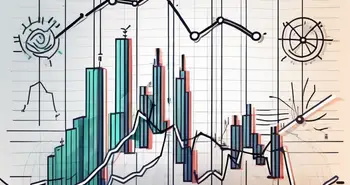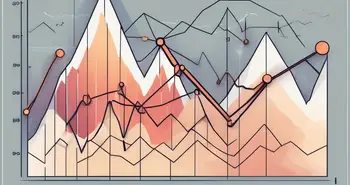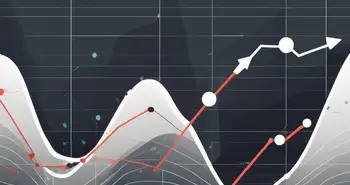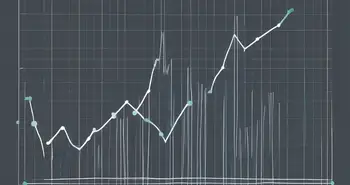Keltner Channel: Understanding Its Meaning and Practical Applications
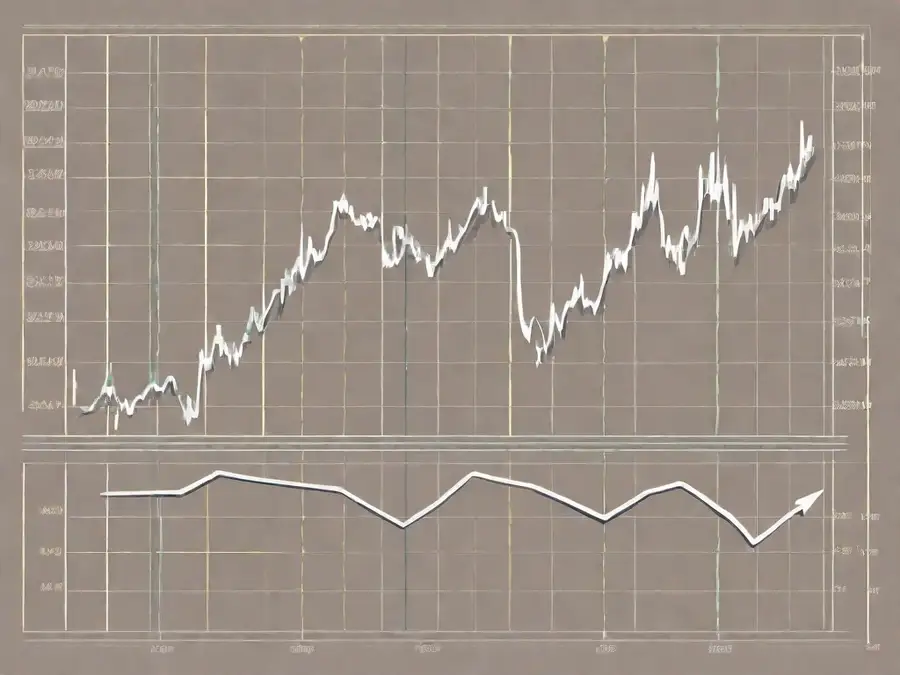
As a seasoned trader and technical analysis enthusiast, I am constantly exploring different tools and indicators to enhance my trading strategies. One such tool that has piqued my interest and proven to be a valuable asset in my trading arsenal is the Keltner Channel. In this article, I will delve into the meaning and practical applications of the Keltner Channel, unraveling its intricacies and shedding light on how it can be effectively used in the ever-changing world of financial markets.
Defining the Keltner Channel
Before we embark on our journey to understand the practical applications of the Keltner Channel, it is important to grasp its fundamental definition. The Keltner Channel is a technical indicator that consists of three lines plotted on a price chart. These lines are derived from volatility-based calculations using a combination of the average true range (ATR) and an exponential moving average (EMA). This unique combination allows traders to identify potential price breakouts and gauge the strength of a trending market.
The Keltner Channel provides traders with a visual representation of price volatility and trend strength. By incorporating the concept of volatility into the indicator, it offers a more comprehensive analysis of market conditions compared to traditional moving averages.
When the price is within the Keltner Channel, it suggests that the market is in a relatively stable state. However, when the price moves outside the channel, it indicates a potential breakout or a significant change in market conditions. Traders can use this information to identify potential trading opportunities and adjust their strategies accordingly.
Origins of the Keltner Channel
The Keltner Channel was created by Chester W. Keltner, a grain trader and market analyst, in the 1960s. Keltner revolutionized technical analysis by introducing a volatility-based indicator that helped traders identify market conditions more accurately. He believed that by incorporating the concept of volatility, traders could gain a deeper understanding of price movements and make more informed trading decisions.
Chester Keltner's innovative approach to technical analysis paved the way for the development of other volatility-based indicators. His contribution to the field of trading has had a lasting impact and continues to be widely used by traders around the world.
Over the years, the Keltner Channel has evolved and been refined by traders and analysts. Various modifications and adaptations have been made to suit different trading styles and market conditions. Today, it remains a popular tool among technical analysts and is widely used in various financial markets.
Key Components of the Keltner Channel
To comprehend the implications of the Keltner Channel, it's essential to grasp its key components. The Keltner Channel comprises three lines: the middle line, the upper band, and the lower band. The middle line is derived from a simple moving average (SMA) or an exponential moving average (EMA), and it forms the basis for the upper and lower bands.
The upper band is generally set at a multiple of the average true range (ATR) above the middle line, while the lower band is set at a multiple of the ATR below the middle line. The multiplier determines the width of the channel and can be adjusted based on the trader's preferences and the market's volatility.
By using the ATR as a measure of volatility, the Keltner Channel adapts to changing market conditions. During periods of high volatility, the channel widens, indicating greater price fluctuations. Conversely, during periods of low volatility, the channel narrows, suggesting a more stable market environment.
The Keltner Channel can be customized to suit different trading strategies and timeframes. Traders can adjust the length of the moving average and the multiplier to fine-tune the indicator's sensitivity to price movements. This flexibility allows traders to adapt the Keltner Channel to various market conditions and trading styles.
Overall, the Keltner Channel is a versatile technical indicator that provides valuable insights into market volatility and trend strength. By incorporating this indicator into their analysis, traders can make more informed trading decisions and enhance their overall trading performance.
Understanding the Mathematics Behind the Keltner Channel
While delving into the mathematics behind the Keltner Channel may sound intimidating, fear not, as it is relatively straightforward to grasp. Let's take a closer look at how the upper and lower bands are calculated.
The Keltner Channel is a technical analysis indicator that helps traders identify potential price breakouts and trend reversals. It consists of three lines: the middle line, the upper band, and the lower band. The middle line represents the average price over a specified period, while the upper and lower bands indicate the potential price range.
Calculating the Upper Band
The upper band of the Keltner Channel is calculated by adding a multiple of the average true range (ATR) to the middle line. The average true range measures the volatility of an asset by considering the true range, which is the greatest of the following: the distance between the current high and low, the absolute value of the difference between the current high and the previous close, or the absolute value of the difference between the current low and the previous close.
To calculate the upper band:
- Calculate the average true range (ATR) using a selected period.
- Multiply the ATR by a specified factor.
- Add the result to the middle line.
By adjusting the period and multiplier, traders can customize the sensitivity of the upper band to suit their trading style. A shorter period and a higher multiplier would result in a narrower channel, while a longer period and a lower multiplier would create a wider channel.
Calculating the Lower Band
Similar to the upper band, the lower band of the Keltner Channel is calculated by subtracting a multiple of the average true range (ATR) from the middle line.
To calculate the lower band:
- Calculate the average true range (ATR) using a selected period.
- Multiply the ATR by a specified factor.
- Subtract the result from the middle line.
By customizing the period and multiplier, traders can adjust the sensitivity of the lower band according to their individual trading preferences. A wider channel may be preferred for capturing larger price swings, while a narrower channel may be suitable for identifying smaller price movements.
The Keltner Channel is a versatile tool that can be applied to various financial markets, including stocks, commodities, and forex. Traders often use it in conjunction with other technical indicators to confirm trading signals and enhance their overall analysis.
It is important to note that the Keltner Channel, like any other technical indicator, is not foolproof and should be used in conjunction with other forms of analysis and risk management strategies. Traders should always consider the broader market context and their own risk tolerance before making trading decisions based on the Keltner Channel.
Interpreting the Keltner Channel
Now that we have demystified the mathematics behind the Keltner Channel, let's explore how this indicator can be interpreted.
The Keltner Channel is a technical analysis tool that consists of an upper band, a lower band, and a middle line. It is used to identify potential price breakouts and gauge market volatility. By understanding the significance of channel width and interpreting channel breakouts, traders can gain valuable insights into market trends and make informed trading decisions.
Significance of Channel Width
The width of the Keltner Channel holds valuable insights into the market's volatility. When the channel is relatively narrow, it suggests that the market is consolidating, and traders should exercise caution as the potential for breakouts increases. During consolidation, prices tend to oscillate within the channel, indicating a lack of clear direction. Traders may choose to wait for a breakout to occur before entering a trade, as it signifies a potential shift in market sentiment.
Conversely, when the channel widens, it indicates increased volatility and potential larger price movements. A wider channel suggests that market participants are actively buying or selling, resulting in larger price swings. Traders who thrive on volatility may find wider channels more appealing, as they present opportunities for larger profits. However, it is important to note that wider channels can also indicate increased market uncertainty, making risk management crucial.
Understanding Channel Breakouts
Channel breakouts occur when prices deviate from the confines of the Keltner Channel. Breakouts above the upper band suggest a bullish bias, indicating that buyers have gained control and are pushing prices higher. This breakout can be seen as a potential buying opportunity, as it suggests a continuation of the upward trend. Traders may choose to enter a long position or add to their existing positions to capitalize on the upward momentum.
On the other hand, breakouts below the lower band indicate a bearish bias, suggesting that sellers have taken control and are driving prices lower. This breakout can be seen as a potential selling opportunity, as it indicates a continuation of the downward trend. Traders may choose to enter a short position or add to their existing short positions to profit from the downward momentum.
Traders often view these breakouts as potential trading opportunities, employing various strategies such as trend continuation or mean reversion to capitalize on these price movements. Trend continuation strategies involve riding the momentum of the breakout, while mean reversion strategies involve betting on a reversal of the breakout. Both approaches have their own merits and risks, and traders should carefully consider their trading style and risk tolerance before implementing any strategy.
Practical Applications of the Keltner Channel
Now that we have a solid foundation in understanding the Keltner Channel, let's explore its practical applications in the realm of trading.
Using the Keltner Channel for Trend Identification
The Keltner Channel can be a powerful tool for identifying and confirming trends. By analyzing price movements within the channel, traders can determine whether a trend is strengthening or weakening. If the price consistently stays above the middle line and the channel is widening, it signifies a bullish trend. Conversely, if prices consistently stay below the middle line and the channel widens, it suggests a bearish trend. This information can help traders make conscious decisions about entering or exiting positions in alignment with the prevailing trend.
The Keltner Channel in Swing Trading
Swing traders often utilize the Keltner Channel to spot potential short-term reversals or pullbacks within a broader trend. When the price reaches the upper band of the Keltner Channel, it suggests an overbought condition, signaling a possible retracement or trend reversal. Conversely, when the price touches the lower band, it indicates an oversold condition, potentially signaling a bounce or trend reversal to the upside. Swing traders can use these levels as potential entry or exit points in their trades, combining the power of the Keltner Channel with other technical analysis tools for more accurate predictions.
Limitations and Considerations of the Keltner Channel
While the Keltner Channel has undeniable benefits, it is essential to acknowledge its limitations and exercise caution when incorporating it into your trading strategy.
False Signals and Overreliance
Like any technical indicator, the Keltner Channel is not foolproof and may produce false signals. It is crucial to exercise discretion and not solely rely on this indicator for trading decisions. Combining the Keltner Channel with other technical analysis tools, such as oscillators or trend lines, can help filter out false signals and increase the accuracy of your trading strategy.
Importance of Complementary Analysis
To truly harness the power of the Keltner Channel, it is imperative to supplement it with comprehensive market analysis. Fundamental analysis, news events, and overall market sentiment play crucial roles in determining the success of your trades. By combining the insights provided by the Keltner Channel with a holistic approach to trading, you can increase your chances of making profitable decisions.
As an experienced trader, I recall a personal anecdote that truly highlighted the effectiveness of the Keltner Channel. During a period of increased market volatility, I relied on the Keltner Channel to identify potential breakouts. I noticed that the breadth of the channel had widened significantly, signaling a higher likelihood of substantial price movements. Armed with this information, I executed trades accordingly, resulting in significant profits. This experience solidified my trust in the Keltner Channel as a valuable tool in navigating the intricacies of the financial markets.
In conclusion, the Keltner Channel is a versatile technical indicator that can provide valuable insights into market conditions and price movements. By understanding its meaning, mathematics, and practical applications, traders can incorporate the Keltner Channel into their trading strategies to make informed decisions and increase their chances of success. However, it is crucial to remember that no single indicator can guarantee profitability, and a holistic approach to trading, encompassing comprehensive analysis and risk management, is key to long-term success.
As you consider the potential of stock trading and the broader cryptocurrency landscape, why not expand your investment horizon with Morpher? At Morpher.com, you can leverage the power of blockchain technology to trade across a multitude of asset classes, including cryptocurrencies, without the burden of fees or liquidity constraints. With the ability to engage in fractional investing, short selling, and up to 10x leverage, Morpher offers a unique and flexible trading experience that aligns perfectly with the innovative spirit of crypto mining. Take control of your investments with the safety of the Morpher Wallet and explore new market opportunities today. Sign Up and Get Your Free Sign Up Bonus to embark on a transformative trading journey with Morpher.

Disclaimer: All investments involve risk, and the past performance of a security, industry, sector, market, financial product, trading strategy, or individual’s trading does not guarantee future results or returns. Investors are fully responsible for any investment decisions they make. Such decisions should be based solely on an evaluation of their financial circumstances, investment objectives, risk tolerance, and liquidity needs. This post does not constitute investment advice.

Painless trading for everyone
Hundreds of markets all in one place - Apple, Bitcoin, Gold, Watches, NFTs, Sneakers and so much more.

Painless trading for everyone
Hundreds of markets all in one place - Apple, Bitcoin, Gold, Watches, NFTs, Sneakers and so much more.

